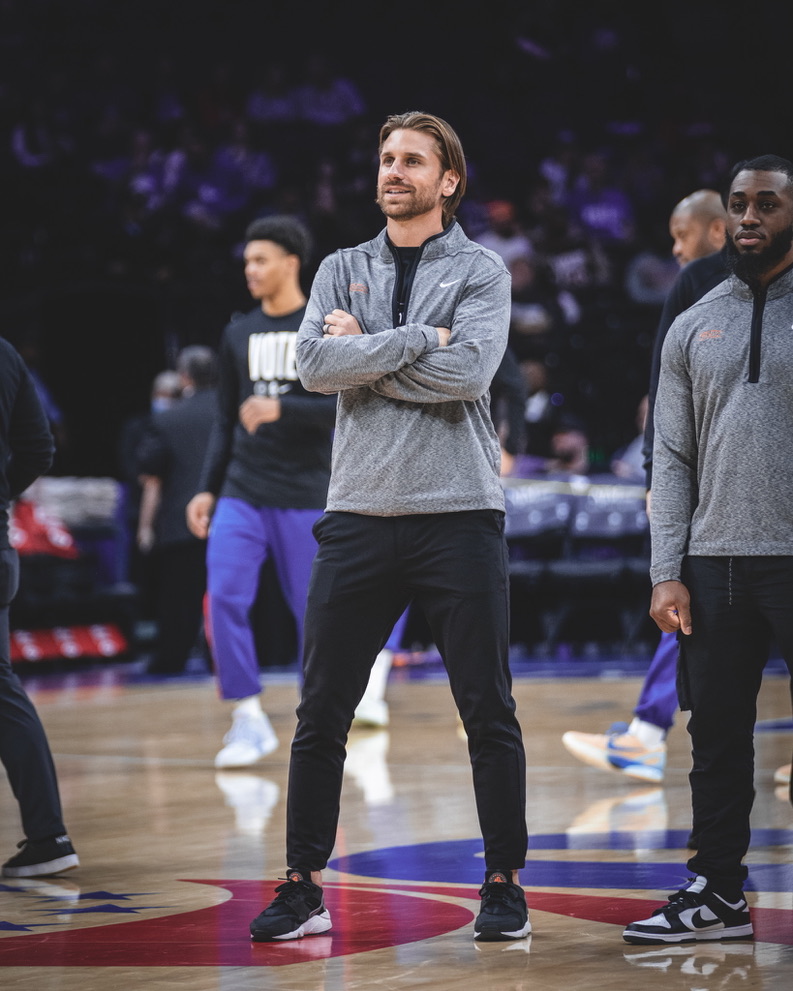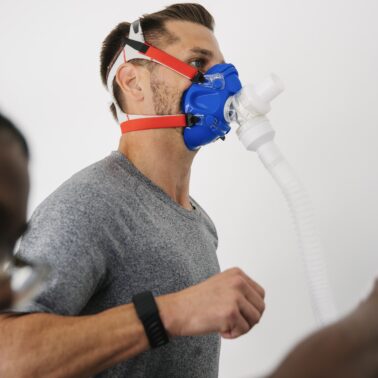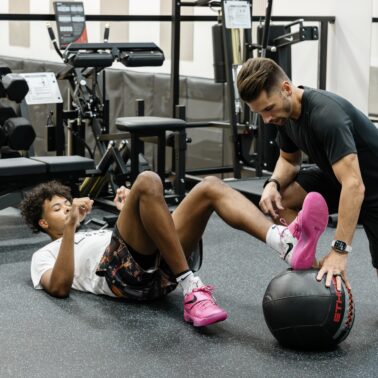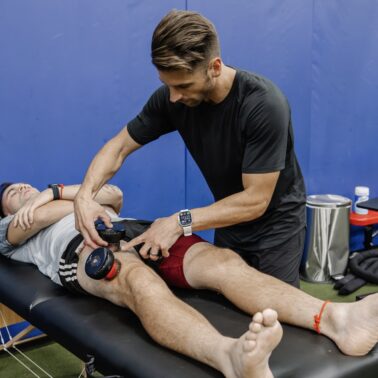“A challenge I face in return to play with team sports and hear of colleagues struggling with too is accountability, process, and managing expectations of all key stakeholders.”
Adam Loiacono
What You Will Learn
- How the acronym ABCDE is a working model for improving accountability.
- Advice on managing interdisciplinary dynamics.
- The importance of being transparent with your athletes.
I have (2) college degrees, have worked in multiple professional sports, and read dozens of books. So have many of my colleagues too. The X’s & O’s of rehab I have a good grasp on. So do my colleagues. We can have the best rehab plan laid out, but if we cannot establish Accountability with our athletes, with our organization, and with our colleagues – then our rehab will fail. This is where the ABCDE model comes into play.
The ABCDEs is my model for how to create Accountability and progress rehab within team sports. The model goes as follows:
- Accountability
- Boundaries
- Communication
- Deadlines
- Expectations
Accountability
Showing up and setting out to accomplish the things you said you’d do.
We all speak on things we want to accomplish. We all can talk the talk. Yet, how many of us can walk the walk? Walking the walk is the secret sauce to successful rehab. I hear people speak about Accountability all the time.
- “We have to keep him/her accountable!”
- “He/she doesn’t want to do the work. We have to be better at holding him/her to a standard.”
- “He/she keeps showing up late (cue the eye roll).”
And the list goes on…and on…and on. That’s talking the talk. So how do you walk the walk. That’s where the BCDE come into play for the ABCDE model
One component of the ABCDE model that I want to highlight is the power of choices. We all prefer choices. I imagine many of us prefer to take ownership over our lives by making choices. As my favorite TV character Ted Lasso once said:
“It is our choices, gentlemen, what show what we truly are, far more than our abilities.”
Ted Lasso
#1 Thing to do at the start of rehab
The #1 thing we can do from the start of rehab is to provide our athletes choices. Choices create ownership over their rehab. Ownership promotes empowerment and accountability.
Choices can be as simple presenting (2) different plans for the day that achieve the same goal.
- The goal is an intensive strength day in the vertical vector. Do you want to go heavy Smith machine or heavy leg press?
- The goal is extensive, non-impact conditioning. Do you want to do BFR on the bike or a medicine ball circuit?
If we can make our athletes an active participant in the decision making of the rehab plans, then I believe we will achieve a higher rate of accountability.

Boundaries
My wife is a brilliant mental health therapist. She has worked with severe mental illness in adults to some bizarre scenarios with children. One phrase she has engrained in me is this:
“People crave boundaries.”
Lauren Loiacono
Boundaries exist everywhere in life….
- When we were kids, our parents told us to be home before the streetlights came on…Boundary.
- In high school, our teachers told us no talking while the teacher is lecturing…Boundary.
- As adults, we are not supposed drive 40-mph in a 25-mph school zone…Boundary.
In my experience working with grown adults in professional sports we forget to establish boundaries. Maybe it’s because we praise them for being the best. Maybe it’s because we realize some of their exuberant salaries expose them to unlimited resources. Or perhaps because they are adults, we assume they understand how to follow rules and expectations. We’re all only human. We all need boundaries that provide us structure.
Boundaries’ twin: Consequences
Boundaries co-exist with consequences. If-this-then-that scenarios. If you drive 40-mph in a 25-mph zone, then you’re going to get a fine. If you are home after the streetlights turn on, then you’re grounded for the weekend. How do we apply this in rehab?
Time is a simple example of a boundary. Establish when rehab starts and stick to it. If the player is late to rehab, then we will have to omit a portion of your rehab because we lost time.
Establish boundaries with other staff members. A common one is the relationship of physical therapist and strength & conditioning coach. Provide the strength coach with boundaries on what they cannot do with the athlete in the weight room. If you are going to load the lower body for a training session, then please do not load the affected limb. If you are going to condition the athlete for an aerobic stimulus, then please do not do any impact.
Boundaries are also important for progression of rehab. Boundaries are synonymous with Return to Sport Criteria. The Criteria is often “if-then” statements. If you can squat 1.5x your bodyweight, then you can start plyometric training. If you can achieve less than 10% asymmetry on your quad testing, then you can start running.
Boundaries establish order. They minimize setbacks. And they are the first step in establishing Accountability within rehab.

Communication
There is this idea out there that 7% of communication is established verbally. The other 93% is established non-verbally – either through tone of voice or body language. If we can appreciate how little verbal communication impacts the idea of communication, then I hope we can recognize how important it is to be dialed in with what we are saying.
Previously we discussed boundaries. Did you communicate those boundaries to your player? How about your coaching staff? Your other medical & performance staff?
I’ll be the first to acknowledge that this can be very challenging in team sports. Sometimes I have over 10 people involved in a rehab case. How do you communicate everything that is going on in your head to the right stakeholders at the right time? My advice – take care of the player first. Ask them who they want prioritized with communication. Then create a mental hierarchy of communication based on their feedback and the immediate phase of rehab.
For example, if surgery just happened then the top of your communication hierarchy is your surgeon and team doctors. The bottom of your hierarchy is your skill development coach. If rehab is in its end stage phase progressing sprinting, then the top of your hierarchy is your strength & conditioning coach, and the bottom is your athletic trainer.
Hierarchy of communication fluctuates based on who’s expertise is needed when. In my experience, trying to keep everyone involved every step of the way often creates too many cooks in the kitchen. Paralysis by analysis can be a real thing in rehab.

Deadlines
Deadlines are synonymous with Goals, but Goals didn’t fit well within my acronym of ABCDE model. Athletes are incredibly competitive. It is their literal job to compete against an opponent. Creating deadlines establishes if-then statements for Return to Sport Criteria.
Deadlines are also an indirect means of communication. Establishing these deadlines can help teammates understand when and how they will be utilized in the rehab process. For example, until the athlete can walk pain free, the strength coach is not permitted to perform lower body loading. Until the athlete can tolerate extensive plyometrics with the strength coach, the sport coach is not permitted to do spot shooting with the athlete.
Deadlines outline the next steps needed to progress. They also showcase the journey of rehab for those who may not fully understand the big picture of the rehab process.

Expectations
Early in my college soccer coaching years, I was an assistant for a long-time tenured coach. He had been coaching for decades and married equally as long. The best advice he gave me was this:
“When your wife calls asking you what time you will be home for dinner, always say 30 minutes more than you will anticipate. No one wants to be late for dinner. Happy wife, happy life.”
College Soccer Coach
Managing player expectations
Expectations are 2-fold. First, we must manage expectations for what the athlete is experiencing. Some athletes are repeat offenders of a particular injury. They have had multiple ankle sprains and they can anticipate what to expect based on past experiences. Some athletes have never had a particular injury so we must set realistic expectations for what the progress of rehab will be.
Expectations also provide an anchor for their mental health too. I have seen how setting expectations can ease anxiety and stress. I think we all can relate. We learned from the 2020 COVID pandemic that living in the unknown can be stressful. No expectations can be a recipe for internal spiraling and catastrophizing.
Managing everyone else’s expectations
Second, we must manage expectations of everyone else in the organization. From the front office to the head coach to our colleagues on the medical & performance staff. Nothing is more frustrating for anyone than expectations not being met and being let down. There’s sometimes a quote that floats around about this topic – “Under promise and overdeliver.” I think that’s what my college soccer head coach was indirectly telling me with his advice about his wife and dinner.
I somewhat agree with this. If you create a deadline that is far off and you achieve that deadline beforehand, you look like a hero. The flipside to that though is if that becomes the norm, then you may be expected to deliver early all the time.
Instead, I prefer to be transparent. Based on all available evidence I have at hand I try to give best-case and worst-case scenarios. Rehab is complex. It’s not always straightforward. If things go perfectly, then here is the earliest I anticipate a player being back. If things fall out of place, here’s when I expect the latest the athlete to return. Most times we return somewhere in the middle. Even then, the human body still amazes me and sometimes we are way early and way late. That’s rehab for you.
Create realistic and manageable expectations within the ABCDE model. Then communicate those with all key stakeholders and with the athlete too. Most of us prefer having a Google Maps estimate of when we are expected to return home to dinner after work. Sometimes Google Maps is right on the money. Sometimes we are early for dinner, yet sometimes we are late too.




